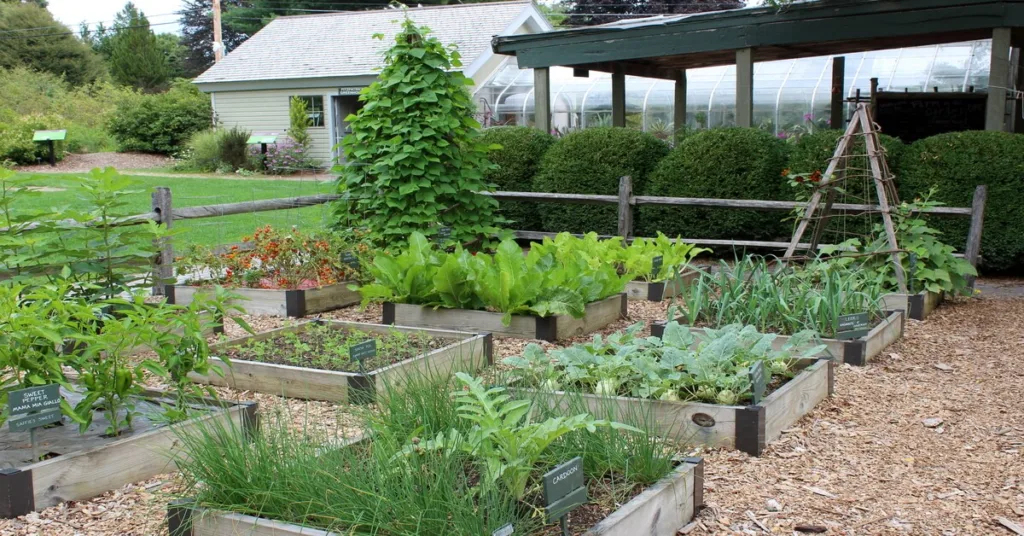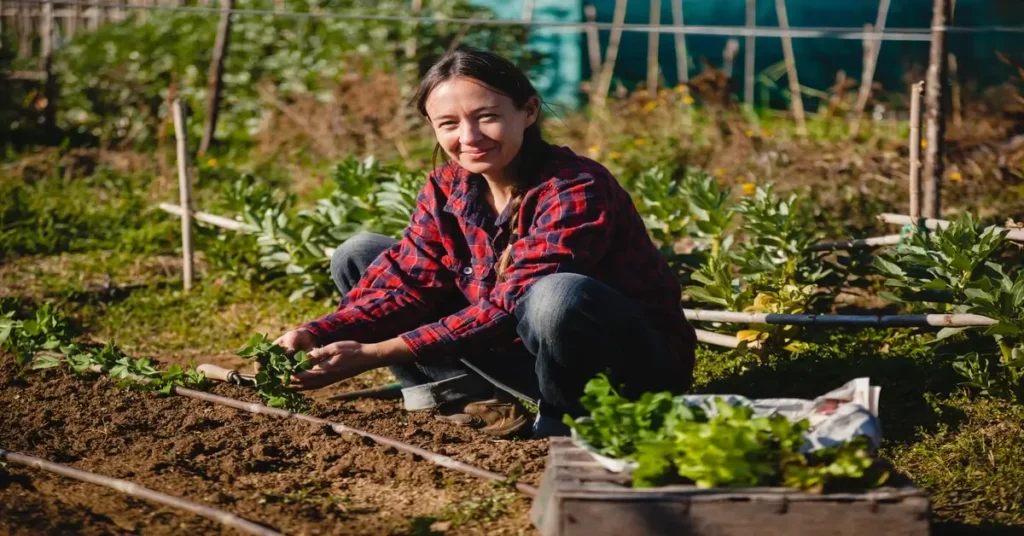The Back to Eden gardening method is a regenerative organic gardening technique that has gained significant attention recently. Coined by Paul Gautschi, the process emphasizes using wood chips as mulch to improve soil quality and reduce the need for water and fertilizer.
The Philosophy Behind Back to Eden
Paul Gautschi, the man behind the Back to Eden method, believes in letting nature do the work. The philosophy is simple: mimic natural processes to create a self-sustaining garden. This method is not just about growing plants; it’s about creating an ecosystem that requires less work and yields more.
The Role of Wood Chips

Wood chips are the cornerstone of the Back to Eden gardening method. They serve as a mulch layer that retains moisture in the soil, prevents weed growth, and eventually decomposes to enrich the soil with organic material. The type of wood chips used can vary, but fresh wood chips are generally recommended.
Starting Your Back to Eden Garden
Step 1: Choose the Right Location
Select a location for your Back to Eden garden bed with adequate sunlight and good drainage. The area should be free from large rocks and debris.
Step 2: Measure and Mark the Area
Measure the area where you want to establish your garden bed. Use stakes and string to mark the boundaries.
Step 3: Prepare the Soil
Remove any existing grass or weeds from the area. You can dig them up or cover them with cardboard to smother them.
Step 4: Soil Test
Conduct a soil test to determine the pH and nutrient levels. This will help you know what compost and wood chips work best for your garden.
Step 5: Lay Down Compost
Spread a layer of compost about 3-4 inches deep over the entire area. This serves as a nutrient-rich base for your plants.
Step 6: Add Wood Chips
Cover the compost layer with wood chips, about 4-6 inches deep. Fresh wood chips are generally recommended for the Back to Eden method.
Step 7: Water the Layers
Thoroughly water the compost and wood chip layers. This helps to settle them and initiates the decomposition process.
Step 8: Let it Sit
Allow the bed to sit for a few weeks before planting. This gives the wood chips time to decompose, enriching the soil with organic material.
Step 9: Plant Your Seeds or Seedlings
When ready to plant, move aside the wood chips at each planting spot and plant your seeds or seedlings into the compost layer. Replace the wood chips around the base of the plants.
Step 10: Water Again
Water the newly planted seeds or seedlings. The wood chips will help retain the moisture.
Step 11: Ongoing Maintenance
You may need more wood chips to maintain a 4-6-inch layer as your plants grow. Keep an eye out for weeds and pests, although you should have fewer issues due to the mulch layer and rich soil.
Step 12: Harvest and Enjoy
Once your plants have grown and produced, enjoy the fruits (or vegetables) of your labor! The Back to Eden method should result in a fertile, low-maintenance garden bed.
Where to Get Wood Chips?

Finding the right source of wood chips is crucial for the success of your Back to Eden garden. Here are some places where you can obtain quality wood chips:
Local Tree Services
Many local tree services are willing to give away wood chips for free or cheaply. Contact them to inquire if they have any available.
Municipal Programs
Some cities and towns offer free wood chips to residents. Check with your local municipal waste department or community garden centers for information.
Landscaping Companies
Landscaping companies often have excess wood chips and may be willing to sell them at a discounted rate. Ask about the type of wood used to ensure it’s suitable for your garden.
Garden Centers
Many garden centers sell bagged wood chips. While this option can be more expensive, it’s convenient, and you can be sure of the wood type you’re getting.
Sawmills
If you live near a sawmill, this could be an excellent source of fresh wood chips. Just make sure to inquire about the type of wood and whether it has been treated with any chemicals.
Online Platforms
Websites like Craigslist or local community boards often have listings for free or cheap wood chips. Always check the quality and type of wood before committing.
DIY
If you have trees on your property, consider chipping them yourself. However, this would require access to a wood chipper.
When sourcing wood chips, it’s essential to ask about the type of wood and ensure it hasn’t been treated with harmful chemicals. Hardwood chips are generally preferred for their longevity and nutrient content. Avoid wood chips from diseased trees, which can introduce pathogens into your garden.
Watering and Fertilizing
One of the significant benefits of the Back to Eden method is the reduced need to water and fertilize. The wood chips help retain moisture, reducing the frequency of watering. Additionally, as the wood chips decompose, they release nutrients into the soil, reducing the need for additional fertilizer.
Pest Control
The method also offers natural pest control. The rich soil and healthy plants are less susceptible to disease and insect damage, reducing the need for chemical interventions.
Advantages and Disadvantages
Pros
Less work: The Back to Eden gardening method is easy to maintain.
Improved soil quality: The wood chips enrich the soil with organic material.
Reduced need for water and fertilizer: The mulch layer retains moisture and provides nutrients.
Cons
Initial setup: Establishing the garden requires significant wood chips and compost.
Type of wood chips: The kind of wood chips used can affect soil pH and nutrient levels.
Conclusion
The Back to Eden gardening method offers a sustainable and low-maintenance garden method. If you’re looking for a technique that aligns with natural processes and reduces the need for chemical inputs, this could be your perfect garden strategy.



